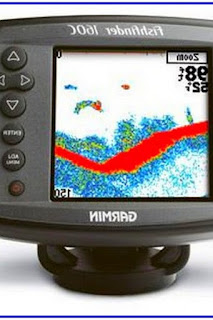Garmin 400C Dual Beam Fishfinder Features and Tips
The Garmin Fishfinder 400C is a great fishfinder for freshwater fishing. It can also be used for salt water, but an upgrade to a dual transducer separate frequency necessary. Thanks to its high resolution bright color of this fish finder Garmin screen helps you easily, even in bright sun fish. The screen has a backlight excursions and ease of use for night fishing possible.
Garmin Fishfinder 400C comes with a dual beam 80/200 kHz transducer that allows deep penetration up to 900 meters. (Note that the disorder or covered water can reach the exact depth the fish finder to decrease.) This sensor is best suited for freshwater fish because of its depth of penetration.
The dual beam transducer provides a 45 degree cone fixed to 80 kHz and a cone angle of 14 degrees of adjustment of 200 kHz. This function allows you to see a large area with less depth and will help you get hard to see in the area of fish in the depths.
If fishing saltwater in your future, you may want to switch to a separate dual frequency transducer. The cone angle pi and dual frequency model 1500 penetrate 45 degrees and 10 degrees, depending on the configuration. As in the dual beam transducer, you will see a variety of bottoms, but with this conversion, it is possible, hard to find, see the fish come up to 1500 meters deep.
If you are in freshwater or saltwater fish, Garmin Fish Finder can be a great tool for you.
Remember, however, that this model comes with a dual beam transducer, but you can buy a dual frequency transducer, as you wish.
Fish Finder Advice
There are some things to keep in mind to keep the fish finder screen during cleaning. First, you should make a habit, Fish Finder screen clean after each fishing trip. This good practice, and the following tips to keep in good condition longer.
When cleaning the box (with the exception of the screen) with a damp cloth and mild detergent. Then dry. Do not use cleaners or chemical solvents that can damage plastic parts. To clean the screen, use an eyeglass cleaner and a dry cloth. The reason for using this type of cleaning, because the screen is anti-reflective coating typically has a diameter. ammonia based cleaners, grease, alcohol, or abrasive cleaners to keep glasses clean siding which specifies that harmful use of anti-glare surfaces.
Most fish finders are also waterproof and resistant to it. Briefly under water (see the instructions for your model manual to be sure). Note, however, that the immersion for a specified period (usually 30 minutes) of time can lead to irreparable damage to the device. If submerged fish finder, dry with a clean cloth and let it dry completely before the next fishing trip.
I thought you might be interested in this article: Gear Hooks and Improve Your Fishing Odds


No comments:
Post a Comment